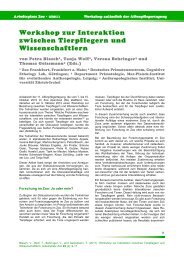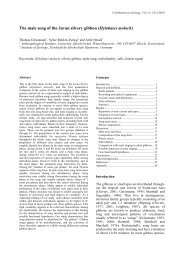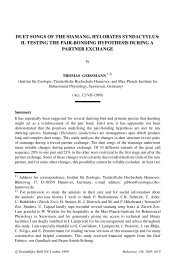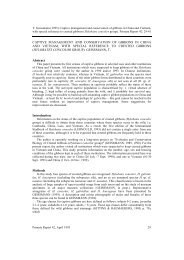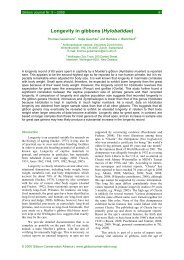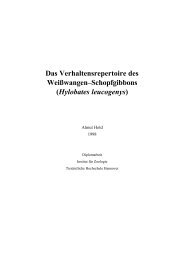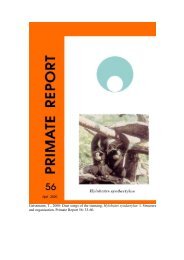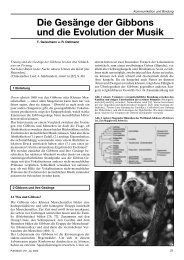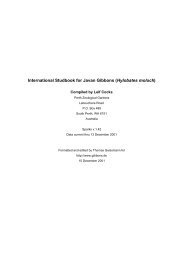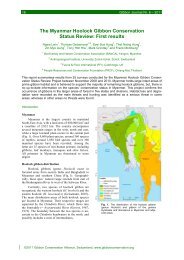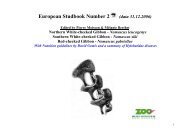How To Tape-Record Primate Vocalisations - Gibbon Research Lab
How To Tape-Record Primate Vocalisations - Gibbon Research Lab
How To Tape-Record Primate Vocalisations - Gibbon Research Lab
- No tags were found...
Create successful ePaper yourself
Turn your PDF publications into a flip-book with our unique Google optimized e-Paper software.
Geissmann: <strong>How</strong> to <strong>Tape</strong>-<strong>Record</strong> <strong>Primate</strong> <strong>Vocalisations</strong> 12In addition, try to be consistent in your methods and the way you record data. That way,someone else listening to your tape-recordings later can learn your pattern, in your absence,and retrieve important information.The importance of adequate documentation of tape-recordings, often obtained underpainstaking efforts and sometimes at much expense, is frequently overlooked by recordists.Lack of documentation seriously weakens the scientific value of your sound recordings. Onecut after the tape-recording has been made, the following information should be narrated ontape:1. <strong>Record</strong>ist & equipment configuration: name of the recordist; type of recorder;microphone and parabolic reflector.2. Identification of target subject and the degree of certainty: name of species; type ofcontact (heard only, seen); number of target subjects on record; sex and age class of targetanimal(s) or group composition (if known); approximate distance of subject frommicrophone; cross-references if same individual can be heard on previous recordings.3. Time & location: date; time at the beginning and the end of recording; time at importantoccasions (swapping cassettes, calls of new individuals etc.); location (accurate locality,district, province, country).4. Other Information: type of habitat; weather conditions; behaviour of subject;identification of other sounds in the background.Try to make a written edit of your tape as soon as possible after recordings arecompleted. Keep a journal of your recordings detailing the contents of your tapes. There, youcan also add information which was not narrated onto the tape. Unedited tapes are moredifficult to use because you need the equipment and, most importantly, the time to go throughthe entire tape every time you need information contained therein. Editing tape recordingstakes a lot of time but makes your collection of recordings much more usable. It is a goodidea, while the day's work is still fresh in your memory, to listen to your tape(s), and make awritten record of what you have recorded.Keep your personal collection of wildlife sounds well-documented and in one place.Clearly label both your tapes and the storage box.AcknowledgementsI thank Dr. Björn Merker for information on hand-made parabolic reflectors. I amgrateful to Dr. Deborah J. Curtis, Dr. Sabine Schmidt, Robert Dallmann and Marina DavilaRoss for reading and commenting upon earlier versions of this manuscript.



